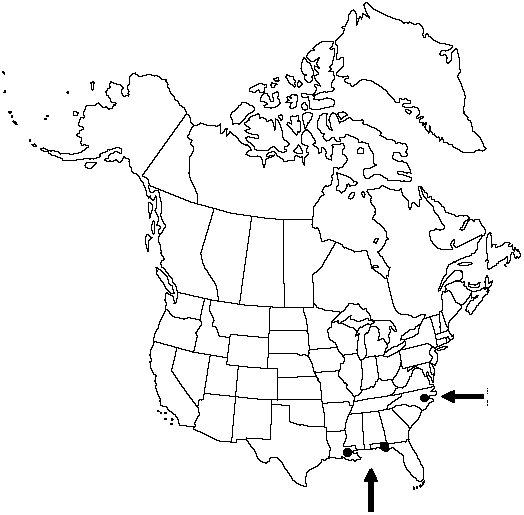Difference between revisions of "Equisetum ramosissimum subsp. ramosissimum"
FNA>Volume Importer |
imported>Volume Importer |
||
| (5 intermediate revisions by 2 users not shown) | |||
| Line 3: | Line 3: | ||
|accepted_authority=Desfontaines | |accepted_authority=Desfontaines | ||
|publications= | |publications= | ||
| + | |special_status={{Treatment/ID/Special_status | ||
| + | |code=I | ||
| + | |label=Introduced | ||
| + | }} | ||
|basionyms= | |basionyms= | ||
|synonyms= | |synonyms= | ||
| Line 19: | Line 23: | ||
|elevation=0–100 m | |elevation=0–100 m | ||
|distribution=Fla.;La.;N.C.;s;c Europe;Asia;Africa. | |distribution=Fla.;La.;N.C.;s;c Europe;Asia;Africa. | ||
| + | |introduced=true | ||
|discussion=<p><i>Equisetum ramosissimum </i>subsp.<i> ramosissimum</i> apparently was introduced from Europe with ballast (R.L. Hauke 1979). <i>Equisetum ramosissimum</i> subsp. debile (Roxburgh) Hauke occurs in southeast Asia and the southern Pacific Islands. Where the ranges of the two subspecies overlap, fertile, morphologically intermediate individuals are found (R. L. Hauke 1963).</p> | |discussion=<p><i>Equisetum ramosissimum </i>subsp.<i> ramosissimum</i> apparently was introduced from Europe with ballast (R.L. Hauke 1979). <i>Equisetum ramosissimum</i> subsp. debile (Roxburgh) Hauke occurs in southeast Asia and the southern Pacific Islands. Where the ranges of the two subspecies overlap, fertile, morphologically intermediate individuals are found (R. L. Hauke 1963).</p> | ||
|tables= | |tables= | ||
| Line 28: | Line 33: | ||
-->{{#Taxon: | -->{{#Taxon: | ||
name=Equisetum ramosissimum subsp. ramosissimum | name=Equisetum ramosissimum subsp. ramosissimum | ||
| − | |||
|authority=Desfontaines | |authority=Desfontaines | ||
|rank=subspecies | |rank=subspecies | ||
| Line 43: | Line 47: | ||
|publication title= | |publication title= | ||
|publication year= | |publication year= | ||
| − | |special status= | + | |special status=Introduced |
| − | |source xml=https:// | + | |source xml=https://bitbucket.org/aafc-mbb/fna-data-curation/src/2e0870ddd59836b60bcf96646a41e87ea5a5943a/coarse_grained_fna_xml/V2/V2_34.xml |
|genus=Equisetum | |genus=Equisetum | ||
|subgenus=Equisetum subg. Equisetum | |subgenus=Equisetum subg. Equisetum | ||
Latest revision as of 20:22, 5 November 2020
Aerial stems persisting more than a year, regularly branched, 32–250 cm; lines of stomates occasionally doubled; ridges 10–16. Sheaths greatly elongate, 8–12 × 3–6 mm; proximal sheaths brown with darker girdle, distal sheaths green; teeth 10–16, not articulate but often thin and drying. Cones pointed at their apex; spores green, spheric.
Phenology: Cones maturing in summer.
Habitat: Moist sandy or clay areas
Elevation: 0–100 m
Distribution

Introduced; Fla., La., N.C., s, c Europe, Asia, Africa.
Discussion
Equisetum ramosissimum subsp. ramosissimum apparently was introduced from Europe with ballast (R.L. Hauke 1979). Equisetum ramosissimum subsp. debile (Roxburgh) Hauke occurs in southeast Asia and the southern Pacific Islands. Where the ranges of the two subspecies overlap, fertile, morphologically intermediate individuals are found (R. L. Hauke 1963).
Selected References
None.